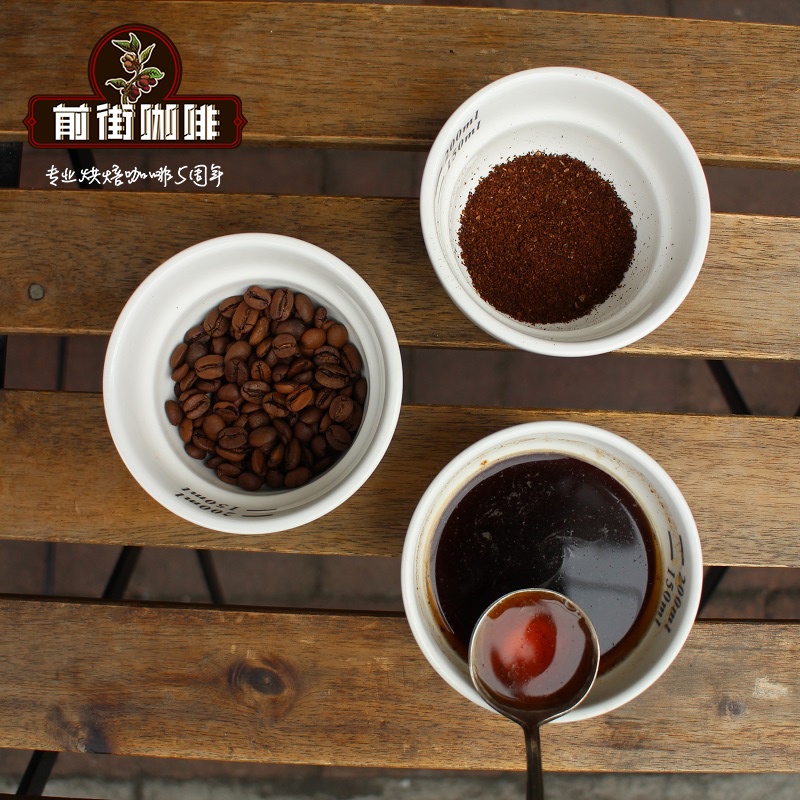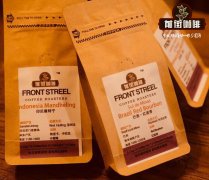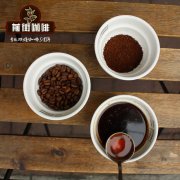What Arabica coffee beans does Luckin Coffee use? Learn about the three major varieties of coffee!

Professional coffee knowledge exchange more coffee bean information please follow the coffee workshop (Wechat official account cafe_style)
The variety of coffee can be divided into
Arabica (Arabica)
Robusta (Robusta)
Rabirika (Liberica)
Generally speaking, Arabica is mainly used in single or boutique coffee, while Robusta is used to make instant coffee. In terms of taste, the United States and Japan drink light coffee made from Arabica more often, while Europe prefers Italian concentrate made from a mixture of Arabica and Robusta.
Arabica (Arabica): premium coffee beans with excellent flavor and aroma
Arabica is a representative variety of Ethiopia of origin, and it is also produced in South Africa, Africa, Asia and other countries, accounting for 70% of the world's coffee production. Arabica has a weak resistance to diseases and insect pests, loves coffee to cultivate 100% Arabica beans for the highlands of Honduras, and continues to develop its own-brand enterprises. Up to now, the coffee garden covers an area of more than 1500 acres and is the largest brand of coffee beans in Honduras, from planting, harvesting, baking to packaging production.
The good quality produced by direct delivery from the place of origin, with a balanced flavor and aroma, can be certified as high-grade coffee beans, and all products that love coffee focus on single coffee or fine coffee. Arabica raw beans have a dark, narrow appearance and are known as the highest quality high-quality Arabica varieties, characterized by rich flavors such as sweetness, sour taste and aroma.
"Arabica" versus "Robusta"
Arabica v.s Robusta
Arabica beans are longer and oval with narrow and zigzag cracks in the middle.
Romstadou is more circular in the middle of the split line crack into a straight line.
Robustas Romsta coffee canephora is very different from West Africa, it has a stronger physique, it grows to more than 10 meters, it has deeper roots, it likes low elevations and Arabica species compared to the same planting size, it can grow beans, it will grow more beans. It has twice as much caffeine as Arabica. But what's interesting is that Alabica has twice as much cholesterol as Romsta.
Robustas
Romsta coffee, also known as big-leaf coffee, is native to the Congo of Africa. It is disease-resistant, insect-resistant and can withstand high temperatures in lowlands. It is an easy-to-grow lowland coffee that tastes bitter but not sour and is suitable for making mixed coffee. It accounts for 30% of the world's output and has been widely cultivated in recent years.
Coffea canephora Pierre ex Froehner-robusta coffee, also known as Canifera Coffee and Congo Coffee, originates from West Africa (West Africa). Its plant character is similar to Arabica Coffee, with pointed leaves, 15-30 X 5-15 cm long leaves and 6 petals. It is mainly produced in Uganda and Java, Indonesia. It is resistant to high temperature, resistant to diseases and insect pests and suitable for lowland cultivation.
Arabica Arabica is also known as Arabica coffee.
Native to Abyssinia (now Ethiopia), there are many improved species all over the world, which accounts for about 2% of coffee production. It has strong fragrance and good taste, but the strict growth environment is not suitable for growing in areas with high temperature, low temperature, rainy and little rain, so its economic value is extremely high.
When Robustas hears it, many people reject it before they taste it. First of all, everyone will think, "does it have that value when paying the bill?"
It was confronted with Arabica Arabica many years ago, and as a result factions came into being, and there are differences, even if not superficially.
Talking about it Robustas Romsta here is because I want people to know how it feels, not the quality of beans, and it can certainly give you something, but you have to know it first!
Where is it different? From the beginning, its origin and tree species are different, and it has been a different system for a long time. For example, {it is like apples and pears, they are both fruits, but they are different. Arabica coffee has 44 chromosomes, while Robasta coffee has 22 chromosomes, but they are all members of the coffee family.
Coffee arabica Arabica is from Ethiopia, Arabica also has many branches, the most famous is Catuai and Caturra. Their hybrid is Bourbon / Pacas and Maragogype, so it needs more nutrients / soil / sunshine and tree shade because of its delicate, but the growth environment is more strict and not suitable for growing in high temperature, low temperature, rainy, less rainy areas, its higher economic value, but also need more care.
Coffee is a perennial evergreen tree with well-developed roots. Arabica coffee can reach 5 meters when unpruned, branches opposite, extending laterally, leaves opposite on short stem branches, petiole short, leaves oval, bright green, glossy, leaves 10-15 cm long, oval, about 6 cm wide, leaves bulging with waves, leaf tip, flower white, with jasmine fragrance. Corolla 1 cm long, petals 5, with stamens 5 and pistil 1, stigma listed as two, after pollination, 3murmur4 days flowers withered, fruit is dark green, crimson after maturity, so it has the reputation of cherry.
The fruit of coffee is formed by outer sk in, pulp, mucilage, perchment, silversk in and coffee beans (bean, green coffee). The seed is the central part of the fruit, and there are pairs of semicircular seeds in each pulp, which is the part we use. It matures 7-9 months after flowering, and the pericarp turns black when dry. The seeds are 8.5mm-12.5mm long, with deep grooves on the surface, green keratinized endosperm (endosperm) and embryo (embryo), polyembryogenic (polyembryony), and about 2500 seeds per kilogram of dry weight.
Coffee trees 4-5 years old will blossom. The flowering period is about 2-3 months each year. Coffee flowers are similar to jasmine in appearance and smell, and are clustered on coffee branches when they bloom. White petals and light fragrance of jasmine, florescence is very short about 3-5 days. The immature coffee fruit is green, and after a ripening period of 6-7 months, the mature fruit skin is red. When the coffee fruit is ripe, it should be harvested immediately. It takes as long as 4-5 months from the initial harvest. Within a year, a typical Arabica coffee tree produces less than 5 kilograms of fruit and can be made into about 1 kilogram of coffee beans.
Other coffee tree species include coffea liberica, also known as the Big Coffee, which was found in Libya in 1843, accounting for about 1 per cent of commercially cultivated coffee, coffea dewevrei, or, more famously, Coffea excelsa, both of which have the characteristics of Robasta, but usually do not taste very good. In addition, wild coffee (Wild Coffee) has Coffea fadenii and Coffea mongensis.
Important Notice :
前街咖啡 FrontStreet Coffee has moved to new addredd:
FrontStreet Coffee Address: 315,Donghua East Road,GuangZhou
Tel:020 38364473
- Prev

What is Arabica coffee? Arabica is better. Arabica coffee beans are very expensive.
Professional coffee knowledge exchange more coffee bean information Please follow the coffee workshop (Wechat official account cafe_style) in the botanical classification of coffee is the genus Coffea (scientific name: Coffea), is a genus of Rubiaceae, native to Africa, there are many varieties. But there are only two main types of coffee drinks that are really commercially valuable and planted on a large scale and made into coffee drinks: Rob.
- Next

Coffee powder brewing skills Open Coffee Powder how to drink Coffee Powder simple brewing method
Professional coffee knowledge exchange more coffee bean information Please follow the coffee workshop (Wechat official account cafe_style) many people drink a strong cup of coffee in order to reduce stress or improve their spirits, but no matter how good beans they choose, they always feel bad and would rather spend money outside. In fact, as long as they master some skills, it can be easy at home.
Related
- Beginners will see the "Coffee pull flower" guide!
- What is the difference between ice blog purified milk and ordinary milk coffee?
- Why is the Philippines the largest producer of crops in Liberia?
- For coffee extraction, should the fine powder be retained?
- How does extracted espresso fill pressed powder? How much strength does it take to press the powder?
- How to make jasmine cold extract coffee? Is the jasmine + latte good?
- Will this little toy really make the coffee taste better? How does Lily Drip affect coffee extraction?
- Will the action of slapping the filter cup also affect coffee extraction?
- What's the difference between powder-to-water ratio and powder-to-liquid ratio?
- What is the Ethiopian local species? What does it have to do with Heirloom native species?

